Richard D. Horonjeff- rhoronjeff@comcast.net
Grant S. Anderson
81 Liberty Square Road #20-B
Boxborough, Massachusetts, 01719
Popular version of paper 3pNCa4
Presented Wednesday Morning, October
19, 2005
ASA/NOISE-CON 2005 Meeting, Minneapolis, MN
In his poem "The Student's Tale" from Tales of a Wayside Inn, Henry Wadsworth Longfellow made popular the oft-used idiom "All good things come to those who wait" (verbatim wording: "All things come round to him who will but wait."). The expression is just as valid today as it was then ... perhaps even more so. With the planet's population still on the rise, it seems especially apropos as we attempt to escape the hustle and bustle of life, seek solitude, and capture a glimpse of that primeval world of long ago. But a "glimpse" is all we may reasonably expect in an increasingly populous, mechanized, and mobile society.
When the National Park system was formed in 1916, the Organic Act stated: "The service thus established shall promote and regulate the use of the Federal areas known as national parks, monuments, and reservations hereinafter specified by such means and measures as conform to the fundamental purposes of the said parks, monuments, and reservations, which purpose is to conserve the scenery and the natural and historic objects and the wildlife therein and to provide for the enjoyment of the same in such manner and by such means as will leave them unimpaired for the enjoyment of future generations.": The apparently conflicting requirements of preservation and providing enjoyment were perhaps more easily managed when the nation's population was one-third of what it is today, but the National Park Service believes it is still possible to provide for both.
Now, as we attempt to find solitude in our National Parks, nature and humanity combine to hinder our quest. It can be so quiet at times that the sounds of human activity can be heard miles away. Whether patience be virtuous or not, we may still have to wait for those acoustically pristine moments when sounds of human activity cannot be heard. This paper reports on observed waiting times for various length periods of "natural quiet," the uninterrupted all-natural sounds of nature devoid of any human-related activity. First, however, let us review some recent history.
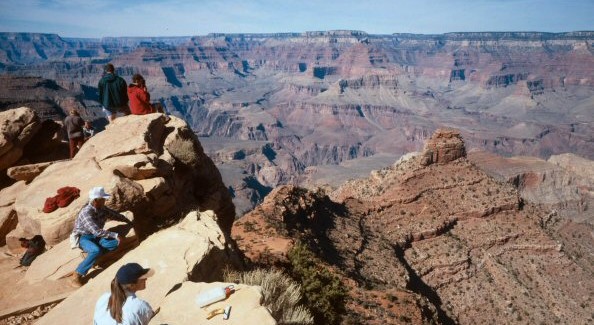
With Congressional passage of the National Parks Overflight Act of 1987 (PL100-91) the Federal Aviation Administration (FAA) and the National Park Service (NPS) were tasked to join forces and begin the process of restoring "natural quiet" to the nation's Parks. At issue was the abundance of air tour activity and its impact on ground visitor enjoyment and cultural resources at a limited number of western U.S. and Hawaiian parks. The law was comprehensive in nature, however, and also addressed emerging or future air tour activity at other Parks as well. On April 5, 2000 the "National Parks Air Tour Management Act of 2000" (PL106-181) followed in the spirit of PL100-91. It required the NPS, in concert with the FAA, to establish a plan for managing existing or future air tour activity at all Park units in a manner consistent with each Park's "soundscape" resource-preservation objectives. To further articulate NPS's position on the natural soundscape as a resource, Robert Stanton, then Director of NPS, issued Director's Order #47: Soundscape Preservation And Noise Management. Its introduction reads, "The purpose of this Director's Order is to articulate National Park Service operational policies that will require, to the fullest extent practicable, the protection, maintenance, or restoration of the natural soundscape resource in a condition unimpaired by inappropriate or excessive noise sources."
During the early 1990's both the NPS and FAA conducted field research at several parks with air tour activity to determine what aspect of aircraft noise best correlated with visitor's reactions to annoyance and interference with natural quiet. Results of the visitor interviews indicated that the percent of time aircraft could be heard was the best predictor of their response. That is, people seemed to be reacting to the mere audibility of aircraft (not just how loud they were) in park-like settings. This finding seems reasonable since visitors presumably expect to escape urban din as part of their park experience. For completeness it should be stated that visitor expectations with regards to human-made noise likely go well beyond aircraft alone. Highway vehicles, personal watercraft, snowmobiles, and unreasonable noises by hikers may also be on some visitor's "intrusive" list, but those were not a part of this particular attitudinal field research.
The stage thus being set, the next question became how to assess impact in a quantitative manner. Congress was very specific about aircraft at the Grand Canyon. In its 1994 Report to Congress (mandated by PL 100-91), NPS stated that "... the policy decision of Grand Canyon National Park (GCNP) is that a substantial restoration requires that 50 percent or more of the park achieve 'natural quiet' (i.e.. no aircraft audible for 75-100 percent of the day)". The Report to Congress and the research findings both provided only an overall time percentage of aircraft audibility. Neither examined how finely that percentage might be sliced and diced and still retain a sense of restoration. For example, would the availability of natural quiet for 50 percent of an hour be perceived equally if it came in the form of one long 30-minute chunk, as opposed to alternating 30-second periods of all-natural and human-made sounds?
That question was put to the test in July of 1997 at White Sands National Monument, NM, a park unit subject to direct overflights from Holliman Air Force Base just south of Alamogordo, NM. Under United States Air Force sponsorship, National Monument visitors were interviewed over a two-week period about their annoyance due to aircraft noise and also their sense of its interference with natural quiet. Concurrently, out-of-sight technicians maintained a continuous time log of all-natural and human-made sound audibility (Figure 1) so that each visitor's acoustic experience could be determined.

Figure 1. Sound Source Logging Instrument
Based on the acoustic source log, a diagram (Figure 2) could be created showing times when only all-natural (indigenous) sounds were audible and when human-made (non-indigenous) sounds could be heard. The diagram shows that human-made and all-natural periods (noise-free intervals} begin and end at more or less random points in time, and that the length of these periods are also quite variable.

Figure 2. Typical Source Audibility Diagram
During the first week, the Air Force made every effort to cluster their sortie launches so that aircraft departed the base one after another, with long periods of inactivity of an hour or more in between. During the second week, squadrons were allowed to launch their aircraft at times of their choosing, consistent with air traffic control requirements. During the first week, there were longer chunks of noise-free intervals than during the second. The survey results showed that visitors preferred these longer chunks, rather than the same total amount of noise-free intervals broken into smaller chunks. Figure 3 introduces the relationship between "wait time" and noise-free interval length by showing the average conditions for each of the two weeks.
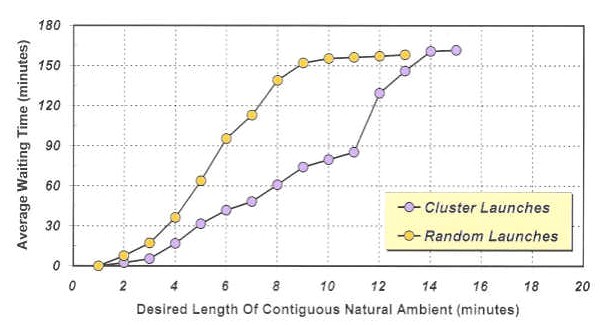
Figure 3. Wait-Time Observations at White Sands National Monument
Shown along the horizontal axis is the length of a noise-free interval, short intervals on the left and long intervals on the right. Shown on the vertical axis is the average length of time a visitor, arriving at a random time during the day, would expect to wait for a desired noise-free interval. As shown in the lower left corner of the graph, wait times are short for intervals of small duration. However, the curves also show that as people's desired noise-free interval durations increase, so will the wait times. The lower curve depicts the first week and the upper curve depicts the second. Clearly visitors during the first week did not have to wait as long for a noise-free interval of any length as did those during the second week. In fact, for any length of noise-free interval, they only had to wait about half as long during the first week. For example, to experience a noise-free interval of 5 minutes duration, they would expect to wait approximately 30 minutes during cluster-launch conditions, but during random launch conditions the expected wait would extend to a little over one hour.
So we come back to Longfellow's idiom, with an addendum "... and better things come to those who wait longer." To put this concept into context, we can advance the reasonable premise that pre-defined expectations are likely to play a large role in the overall enjoyment of future experiences. So, let us presume that at one or more times a Park visitor chooses to stop and absorb the unique features of the park, especially those not part of their daily lives. While they may have had certain loosely defined expectations before embarking on their park experience, only a complete immersion in the "real thing" provides a full appreciation for the number and types of unique features to be experienced. Certainly the landscape, the air quality, the clarity of lakes and streams, and the unique smells could attract their attention. But so might the soundscape ... particularly the absence of human-related sound sources that are otherwise a continuous part of their daily lives.
It is at this point of awareness that an all-natural soundscape can be appreciated to the fullest. And it is also the point at which the clock starts ticking as they imagine enjoying an uninterrupted interval of this newly-found experience: But, as we saw in Figure 2, the greater the noise-free interval length they desire, the longer they are likely to wait to get it. The graphics that follow show additional natural soundscapes and human-related sounds in this perspective.
The remainder of this paper presents similar illustrations derived from identical sound audibility logs at nine different areas of Grand Canyon National Park over a three-day period in September of 1999. The sites were acoustically different both in their natural ambient sound characteristics as well as their proximity to potentially audible aircraft and motor vehicle noise sources. And, they provided contrasting conditions dramatically affecting the "wait times."
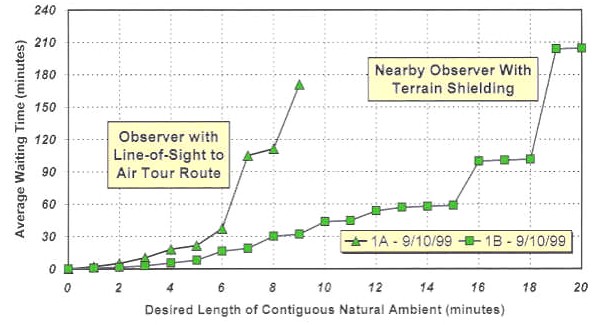
Figure 4. Wait-Time Observations Near Cremation Canyon, Grand Canyon NP
The results of one day of observations approximately eight miles west of the northbound Zuni and eight miles east of the Dragon air tour corridors at Grand Canyon NP are shown in Figure 4. The data from two sites within a few hundred yards of one another are presented, one with a line of sight to the aircraft, and a second located in a ravine where line of sight to the tour aircraft (but not jet traffic) was mostly occluded. Clearly terrain shielding offered both longer noise-free intervals as well as shorter waiting times for intervals of similar duration.

Figure 5. Wait-Time Observations At Cedar Mountain, Grand Canyon NP
The results of two days of observations, approximately eight miles east of the northbound Zuni air-tour corridor appear in Figure 5. Despite the distances involved, both air-tours and high altitude jet traffic could be heard. The site was located on the top of a small volcanic rise, approximately 600 feet above the surrounding terrain. Here tour aircraft appeared low to the horizon, and sound waves reaching a receiver under this condition are subject to atmospheric bending due to wind and temperature gradients. The curves show results from two days with prevailing winds in opposite directions. Clearly upwind propagation (sound traveling against the wind) offered both longer noise-free intervals, as well as shorter wait times, compared with intervals of similar duration to when sound propagation was down wind (sound traveling with the wind).
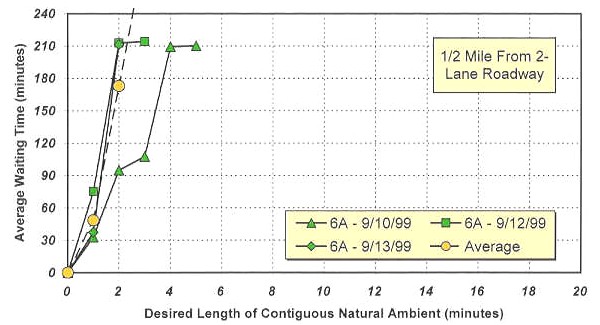
Figure 6. Wait-Time Observations Near Desert View, Grand Canyon NP
The results of three days of observations, one-half mile from a two-lane roadway connecting Grand Canyon Village and Desert View, are shown in Figure 6. The figure clearly shows that lengthy noise-free intervals are simply unavailable at this location, due to the relatively short headways between vehicles and the commensurately short noise-free intervals between the end of one audible vehicle event and the beginning of the next.
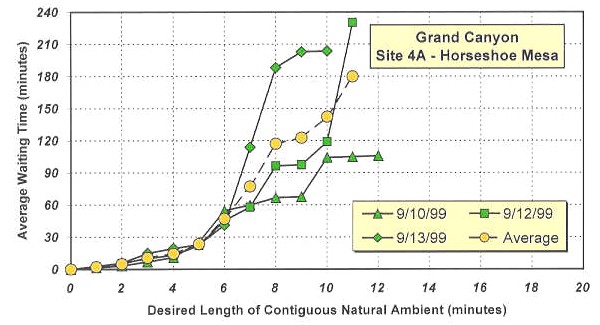
Figure 7. Wait-Time Observations At Horseshoe Mesa, Grand Canyon NP
The results of three days of observations, approximately four miles from the northbound Zuni air-tour corridor, appear in Figure 7. The site was located in the outer canyon and surrounded by sparse, low height, sagebrush. Longer headways between air-tours and jet traffic allowed longer noise-free intervals here, compared with the roadway site.
Perhaps the major observation to be reached from this investigation is that sound sources relatively low in level, by urban and suburban standards, are distinctly audible in low-ambient environments. And their presence is readily obvious at long distances. During low wind conditions, it was not unusual for the ambient sound level to drop near or below the human threshold of hearing. Under such conditions, motorized sources can be audible for long periods of time. Under favorable propagation conditions, both tour and jet aircraft can be heard at distances of ten miles or more.
Striking insight into the visitor experience, as well as the resource preservation, may also be gained. For example, once visitors become aware of the unencumbered natural ambient as a source of enjoyment, and set their sights on even a modest-duration noise-free interval, the average wait times can be lengthy, ranging across the sites from 7 to 210 minutes, for just a 5-minute noise-free interval. At some sites, noise-free interval durations of only 10 minutes were simply unattainable.
Studies are currently under way to investigate the feasibility of using unattended sound level measurements to predict results similar to that of human observers. Given this capability, data from long periods (such as weeks or months) could be obtained to determine quite stable curves of the type presented herein. And, they can also be used to show daily or seasonal variability.
For forecasting purposes, the use of computer models is the only efficient means by which these effects may be evaluated over large land areas, such as an entire Park or Native American lands. This is especially true when evaluating roadway routings, alternative air traffic routes, changes in aircraft or vehicular fleet mix, and potential beneficial effects of "quiet aircraft" technologies (and similar issues regarding all-terrain vehicles, motorcycles, personal watercraft, snowmobiles, and snow coaches). At present, one such audibility model, NMSim, produces output similar to the human observer logs and could therefore be used to predict the sorts of curves presented herein. The FAA's Integrated Noise Model (INM) Version 6.2 could also be made to produce similar output. Tests would obviously be required to ensure model predictions compare with the observations of human observers.
In summary, "wait time" provides a valuable, real-world means for evaluating the impact of human-made sources on areas whose ambient is largely devoid of human-made sounds. It provides two basic pieces of information that may be used for comparisons across sites, or for comparisons against established criteria for regulatory or planning purposes. Upon arrival at a specific location, the descriptor provides information on (a) the expected (average) wait time for a desired noise-free interval duration, and (b) whether lengthy durations are even attainable at the site. Although shown here for eight-hour durations, the concept has also been applied to establish diurnal patterns, where sufficient data has been acquired over two to three weeks to adequately define separate curves showing how wait times vary between different times of day.
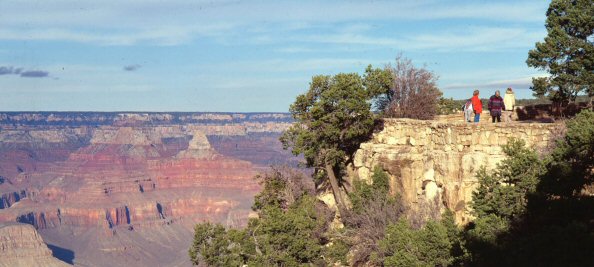
-------------------------------------------------------------------------------------------------